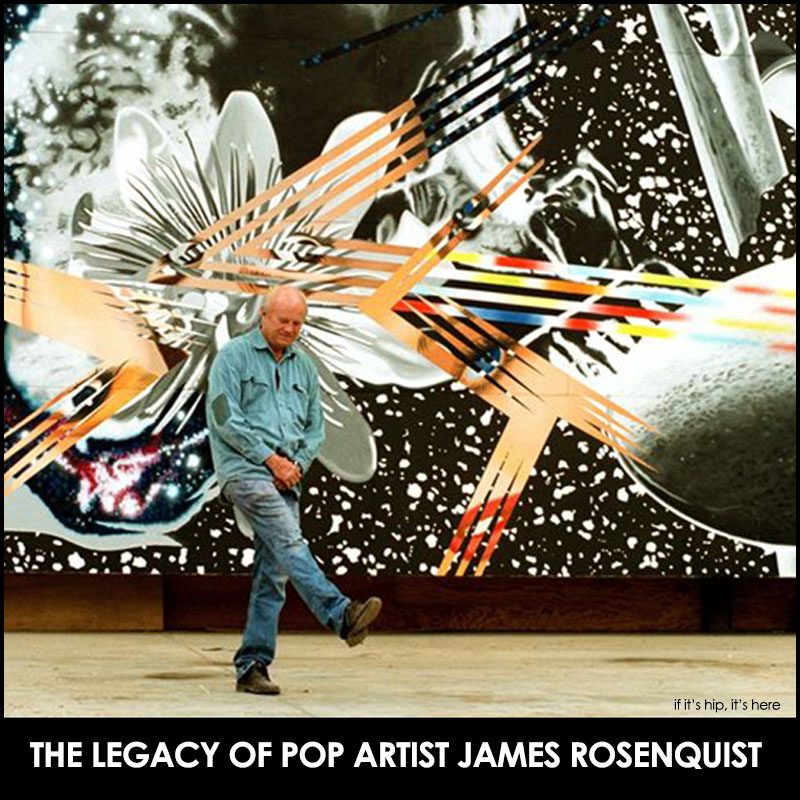Writing these last minute posts because of the passing of someone is never fun. Especially when you know that their absence is likely to change the world as we know it. Such is the case with our losing legendary Pop artist James Rosenquist yesterday. He may not be as well known as Andy Warhol or Roy Lichtenstein, but he work was instrumental in forming the genre.
The Legacy of Pop Artist James Rosenquist
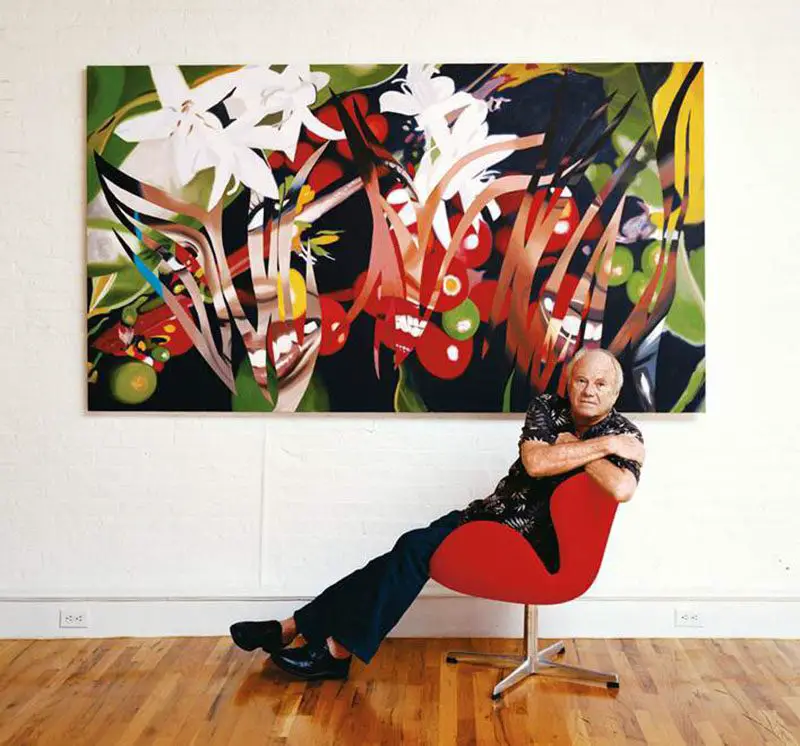
Rosenquist died at his home at the age of 83 in New York City on March 31, 2017 after a long illness. Fortunately for us, he leaves a legacy of numerous paintings and prints that will forever remind us of his contribution to the world of art and art history.
“History is remembered by its art, not its war machines.”—James Rosenquist
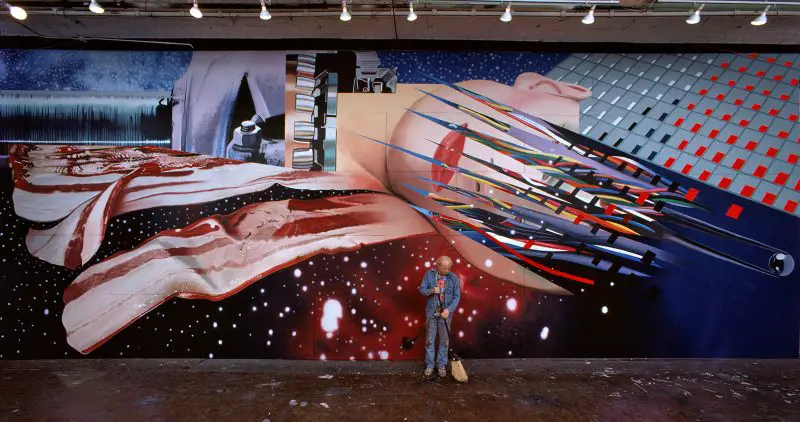
Born in North Dakota, but predominantly raised in Minneapolis, his father was an airplane mechanic and his mother, an amateur painter. James studied painting at the University of Minnesota from 1952 to 1954. In 1955, at the age of 21, he moved to New York City on scholarship to study at the Art Students League.
“Much of the aesthetic of my work comes from doing commercial art,” Mr. Rosenquist said. “I painted pieces of bread, Arrow shirts, movie stars. It was very interesting. Before I came to New York I wanted to paint the Sistine Chapel. I thought this is where the school of mural painting exists. You were painting things up close, like big chocolate cakes. In Brooklyn, I painted Schenley whiskey bottles two stories high, 147 of them over every candy store.”- James Rosenquist
He worked a few odd jobs, but it was earning a living as a billboard painter from 1957-1960 that served as perfect training for his future oeuvre. In 1960 he quit his sign-painting job after a fellow sign painter fell to his death and began creating large-scale paintings on canvas. At that time Rosenquist was dabbling in Abstract Expressionism, which as an art genre, was just then beginning to die out.
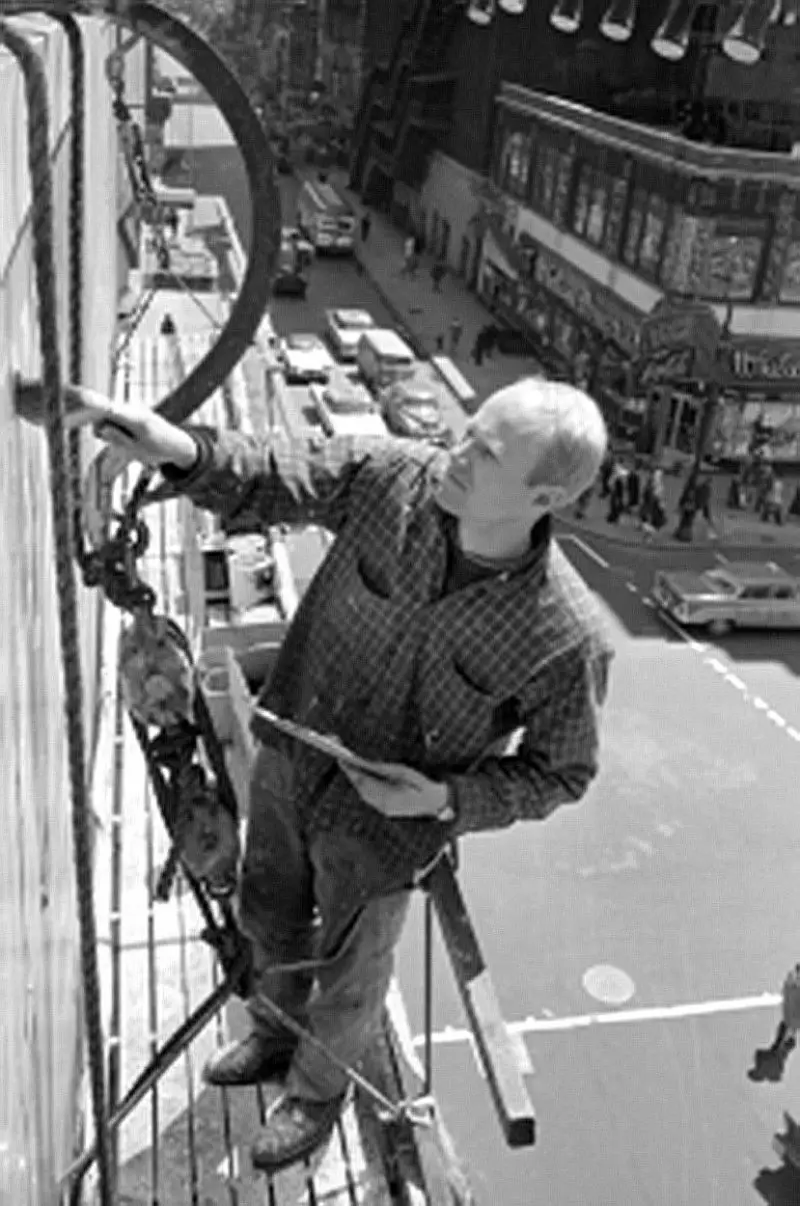
“Abstract Expressionism had become this corny-looking habit…What had been brilliant and incisive in the 1940s and early fifties had become idiot-like and romantic…Everyone was searching to get down to absolute zero, to just color and form, and the only way I knew to do that was to start using imagery again, to paint specific things that couldn’t be confused with something else.” – James Rosenquist
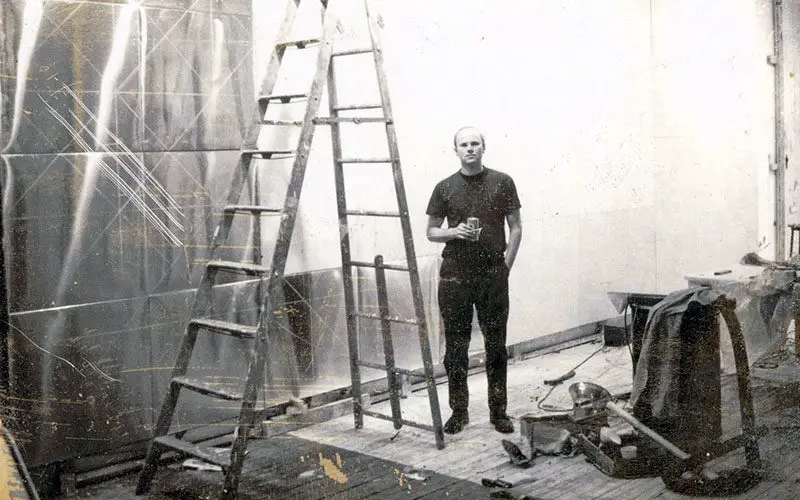
The artist then turned instead to a new realism and to the techniques that he had developed through billboard painting. Working on a massive scale, he created collages that commented on the socio-political and economic climate of America. Often painted in multiple panels, his powerful graphic style incorporated pop culture, politics and commercial objects.
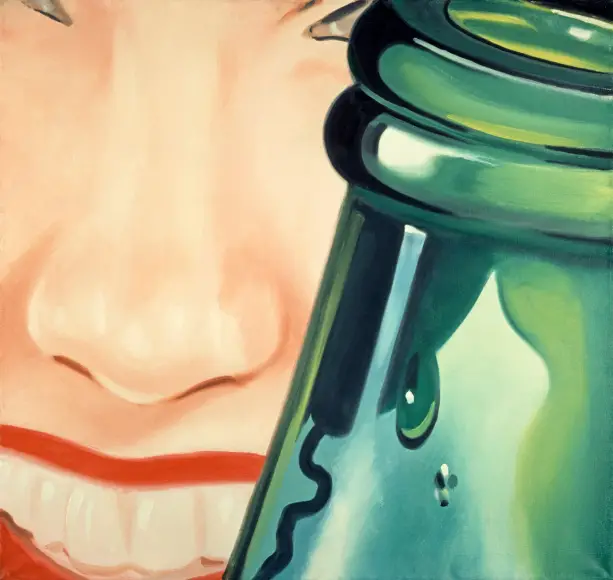
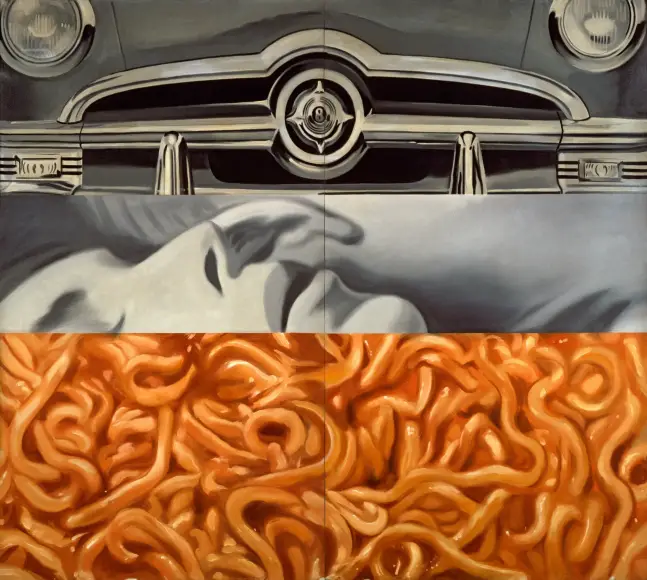
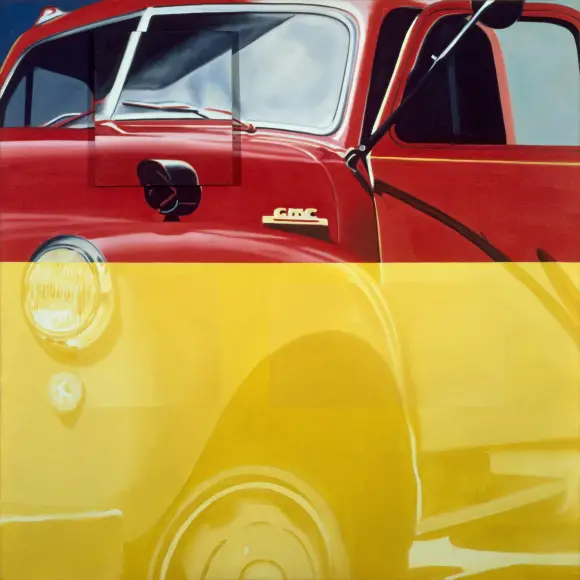
“Popular culture isn’t a freeze-frame; it is images zapping by in rapid-fire succession, which is why collage is such an effective way of representing contemporary life. The blur between images creates a kind of motion in the mind.” -James Rosenquist
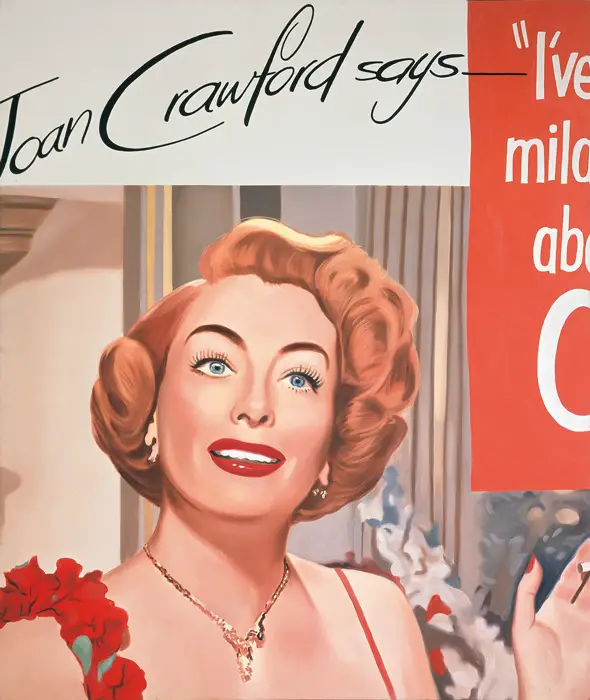
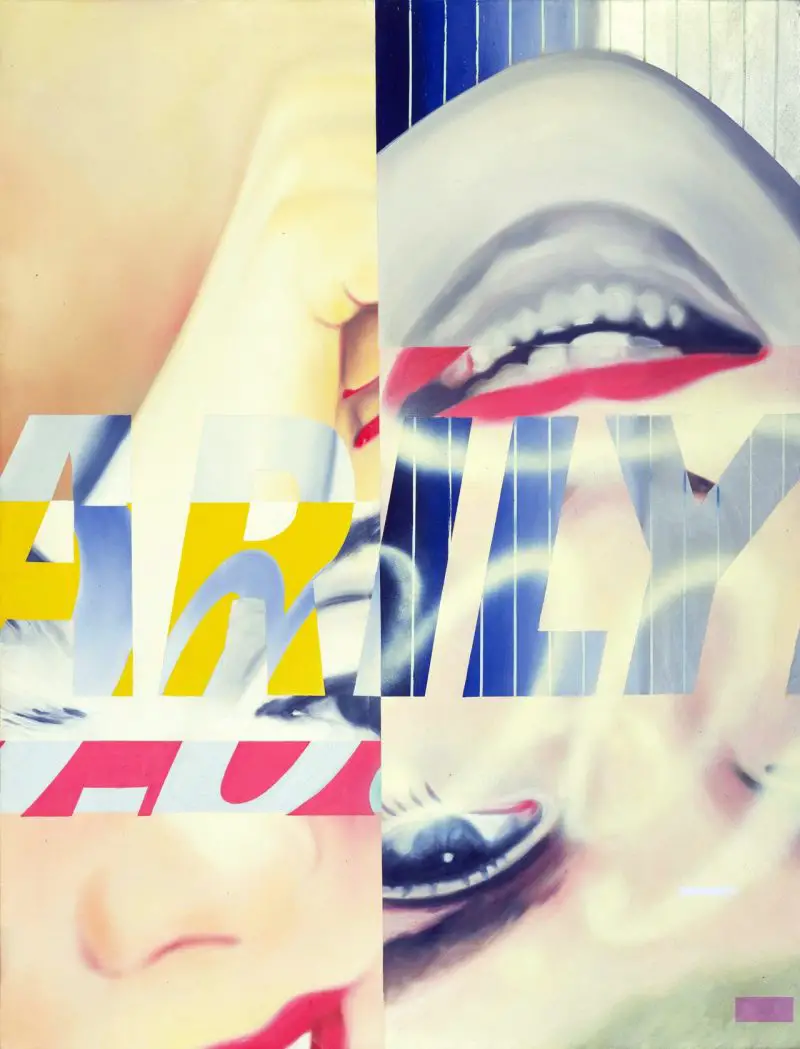
President Elect, 1960-61
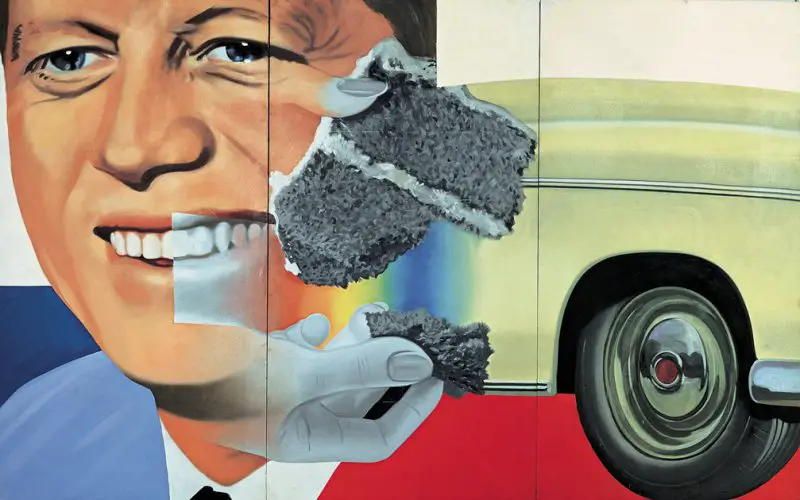
He rose to fame quite quickly in the US, with his first solo exhibition at the Green Gallery in New York in 1962 selling out. Some consider his 1960-61 painting, President Elect, as his breakthrough work, but he really achieved acclaim worldwide as a “Pop” artist with what is considered his best-known work, the enormous 1964-65 “F-111” painting made in part as a protest against American militarism.
F-111, 1964-65

The most ambitious of Rosenquist’s collage paintings, F-111 stretches 86 feet long across 23 canvas panels and aluminum sections, encompassing a viewer’s entire field of vision. The painting depicts a full-scale, 73 foot long F-111 fighter plane interrupted by assorted images derived from billboards and advertisements of the day rendered large and in clashing, day-glo colors. Among the fragmentary advertisements are a tire, a cake, air bubbles, spaghetti, a light bulb, and a young girl using a hair dryer that resembles a missile head. Disturbingly, there is also a beach umbrella juxtaposed onto an atomic explosion, making reference to a particular military euphemism used at the time: “nuclear umbrella.”(source: https://www.theartstory.org/)
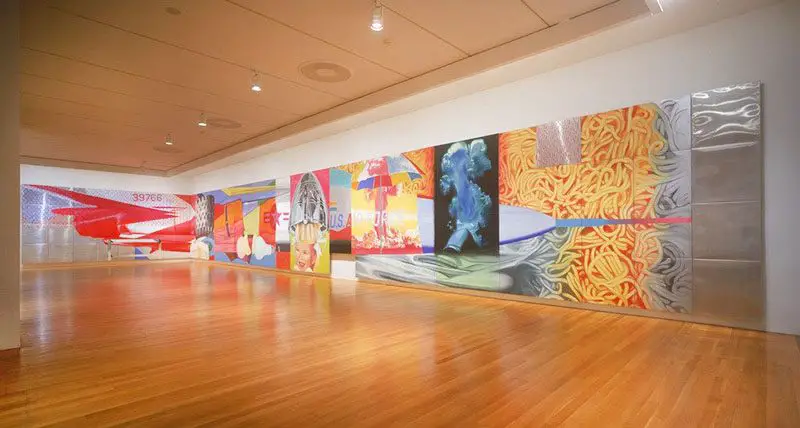
Applying a surrealist approach to his Pop art, his images were often fragmented or overlapping, juxtaposing seemingly unrelated subjects to commercial images.

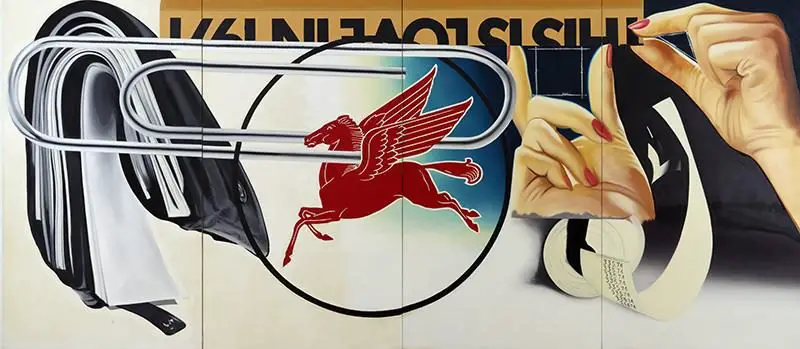
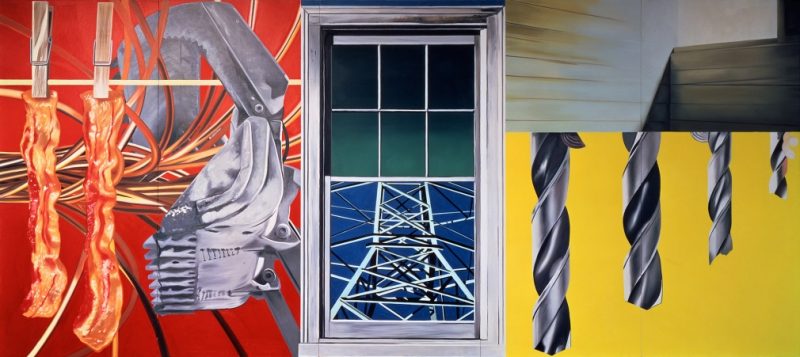
This became more prevalent in his later works. His paintings created during the seventies reflected his political concerns, his fascination with technology and innovation, and their sometimes conflicting relationship with nature. By 1980, ecological issues had begun to concern Rosenquist, as evidenced in his series depicting local tropical flora.


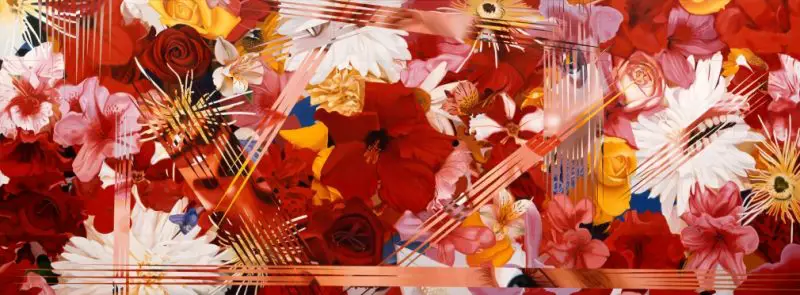
In the nineties, space and time became a dominant theme in his work, just as science-fiction was gaining momentum in popular culture.
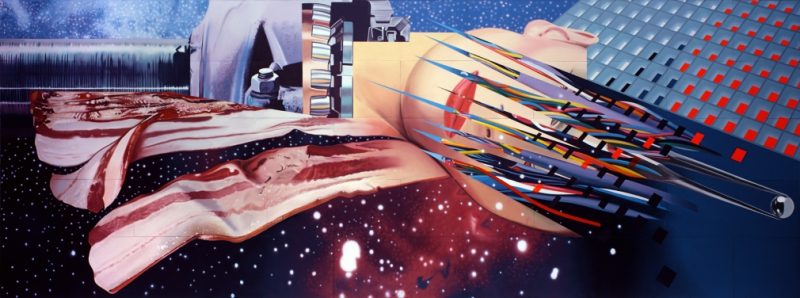

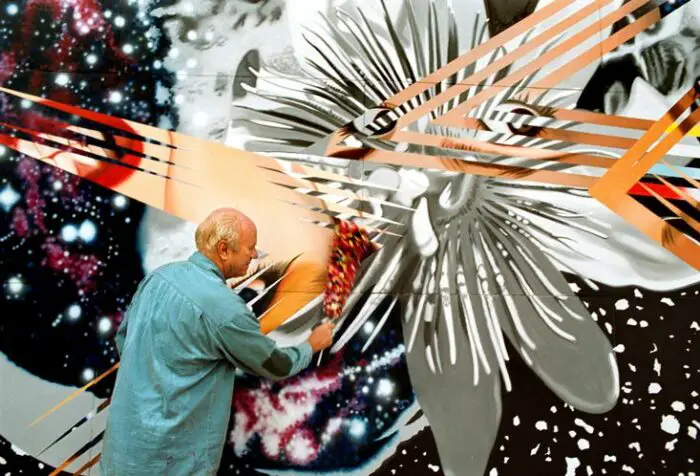
In addition to painting, Rosenquist also produced large-scale prints. His 1992 work Time Dust is thought to be the largest print ever made, measuring 86 x 420 inches.

During the late 1990s, Rosenquist began incorporating abstraction into his billboard-size collage paintings. Stowaway Peers Out of the Speed of Light features brightly colored, distorted, and compressed forms whirling through space amidst layers of sleek, reflective vortices. The seemingly chaotic composition is part of the Speed of Light series, which explores vision in motion.
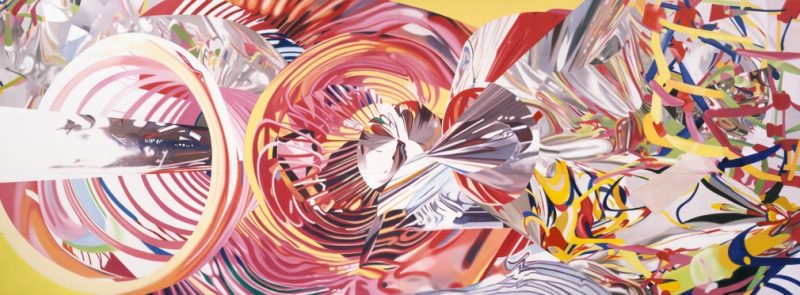
Inspired by Albert Einstein’s theory of relativity and the speed of light, Stowaway addresses how people see and understand the same image differently. Rosenquist explained: “In Einstein’s study of the speed of light, apparently the speeding person looks out of the window [sic], and the view is altered because of the tremendous speed. And then the spectator, watching the speeding person – the look of that is also altered. Things are crammed together, and they’re foreshortened. It’s a pun, really. Like the difference between the artist and the critic, how different people see different things.” (source: https://www.theartstory.org/)
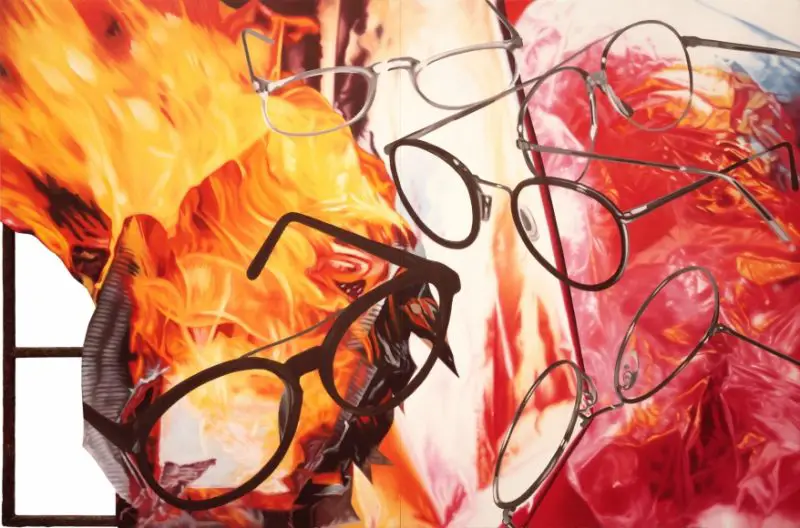
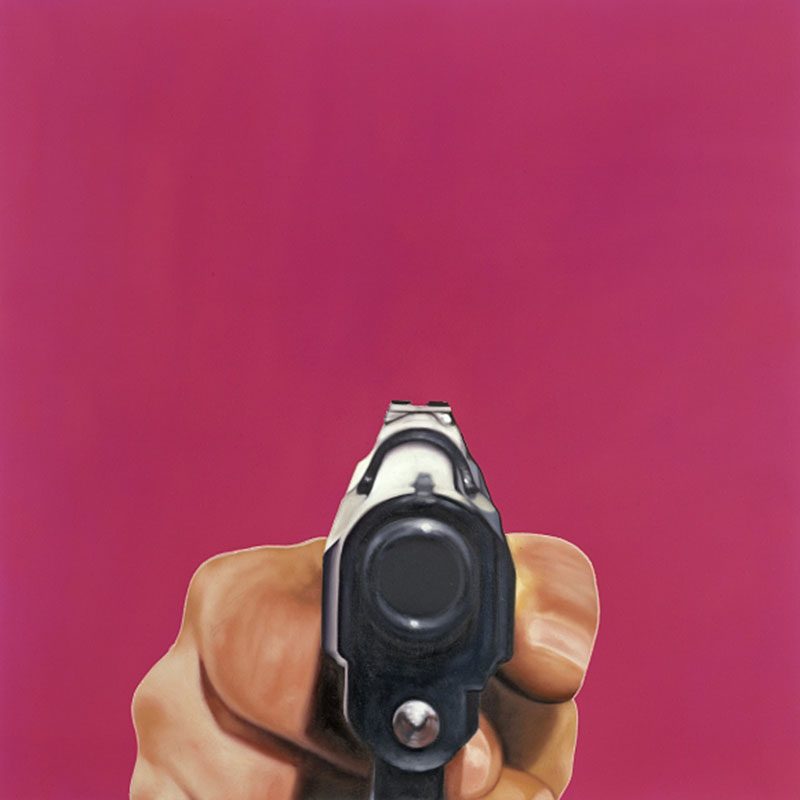
With the installation of The North Dakota Mural at Plains Art Museum in 2010, James Rosenquist returned to his home state in a big way. Drawing on his childhood memories of the Great Plains, he created a work that speaks to the wide open spaces, huge vistas, and ocean-like skies of the region. Using his signature style of mixing different images together at varied scales, he invites us to contemplate how nature, society, culture, agriculture, industry, and history relate to each other in this particular place. The heavens of stars, nebulae, and galaxies depicted in the upper half of the painting make us ponder our place in the universe as much as our location on planet Earth. (source: plainsart.org)
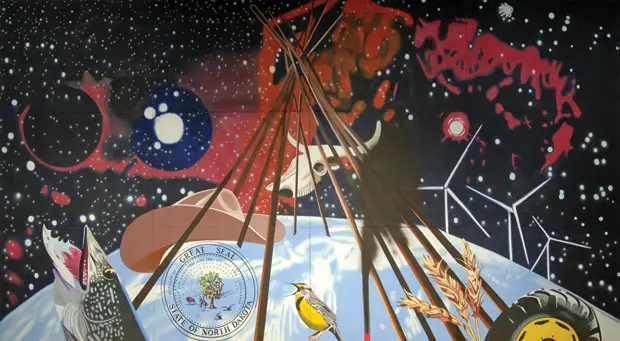
And few of his later works:

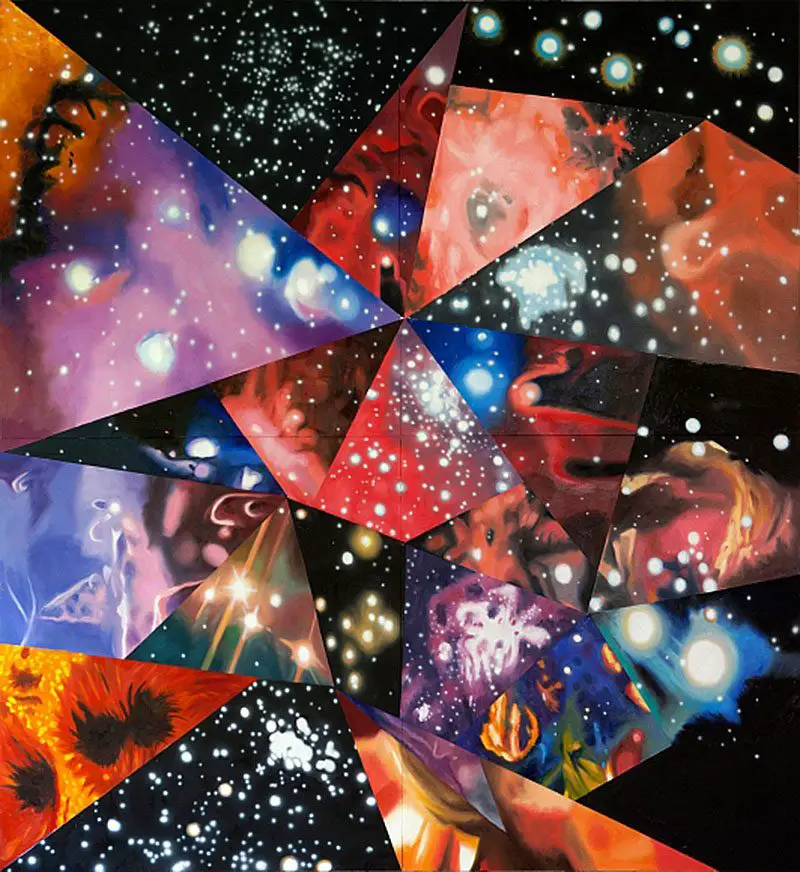
Rosenquist outlived many of his colleagues (e.g. Warhol, Lichtenstein, Judd) and became one of the oldest, living Pop artists working in the new Millennium. His work has inspired several of today’s most respected contemporary artists such as Jeff Koons, Marilyn Minter and Richard Prince.
“You live till you die, and that’s the end of it. What good is your legacy when you are dead? I worry about being alive, selling work, having fun, moving and doing things when I am alive.” – James Rosenquist
In 2009, Mr. Rosenquist published an autobiography, “Painting Below Zero: Notes on a Life in Art” in which he talked about the movement he helped launch.
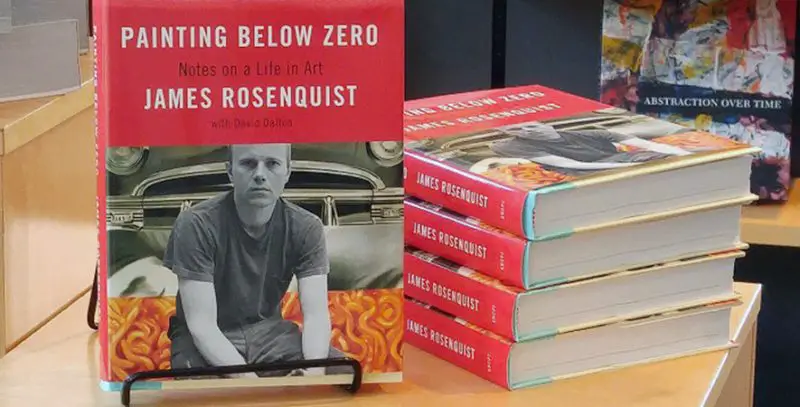
“Pop Art. I’ve never cared for the term, but after half a century of being described as a Pop artist I’m resigned to it,” he said. “Still, I don’t know what Pop Art means, to tell you the truth.” – James Rosenquist
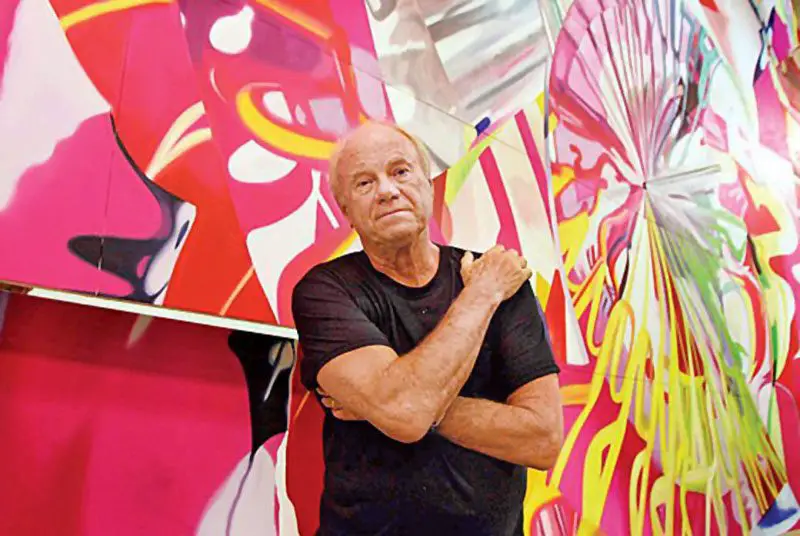
Art Books, Cards and More by James Rosenquist
Thanks to the following sites for the mages, quotes and information
https://www.theartstory.org/artist-rosenquist-james.htm
https://www.nytimes.com/2017/04/01/arts/james-rosenquist-dead-pop-art.html
https://en.wikipedia.org/wiki/James_Rosenquist
https://www.artsy.net/artist/james-rosenquist
https://www.moma.org/explore/f111
https://www.guggenheim.org
https://www.artslant.com/global/artists/show/34744-james-rosenquist
